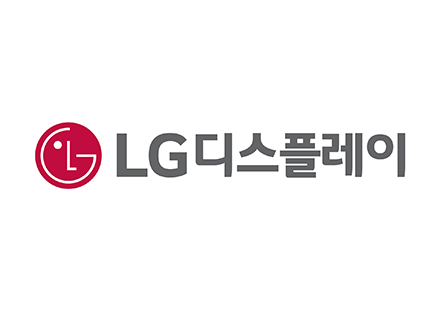Latest News
LG.Philips LCD Breaks Records in TFT-LCD Production
2001-08-27
The term "thin film transistor" in front of liquid crystal display makes TFT-LCD appear to be an extremely complex product. But such screens are not much different from the LCD on your notebook monitor.
It is an advanced version of an TFT-LCDs are coated with layers of transistors-but the term "thin film transistor" is important in that it emphasizes the fact that it is also in the semiconductor category and thus very, very high-tech.
Semiconductors are made of materials that transmit signals under certain conditions and not under other conditions. The material used is silicon and for both LCDs and TFT-LCDs, the silicon is in the semi-liquid form. Hence "liquid" crystal.
Samsung Electronics, by far the largest manufacturing company in Korea, with its shipment of nearly 1.8 million units in the first quarter this year, grabs a global market share of 20.7 percent.
Samsung has been a powerful force in the TFT-LCD industry, but the more interesting case involves LG.Philips LCD, the joint venture with Royal Philips Electronics of the Netherlands. And though a joint venture, its technology was intact long before Philips came on board.
The joint venture was established in 1999 when the Dutch electronics giant injected as much as $1.6 billion to gain a 50 percent stake. They brought in some basic technology and an overseas marketing network.
"Fundamentally, this is a marriage made in heaven since the marketing network, supported by LG Electronics, is further boosted by the powerful presence of Philips in the global marketplace", says Koo, Bon-Joon, president and CEO of LG.Philips LCD.
There were good reasons why Philips joined hands with LG. For starters, LG Electronics had a solid foundation in the business and was committed to making the necessary investment to emerge as a global leader. While a production line for TFT-LCDs is not quite as costly as one for semiconductors, it comes close.
"We saw an opportunity to go one step further from a mere strategic alliance in which both parties would be fully committed, to emerging as the market leader," Koo recalled. And the synergy effects have been enormous.
One after another, LG.Philips chalked up world firsts, and is quickly catching up with Samsung as the No. 1 producer in the world.
Essentially, the company''''s strength is in TFT-LCDs for monitors rater than notebooks. This had been a disadvantage since notebook applications were much more in demand, for the obvious reasons that notebook users cannot lug around a CRT (cathode ray tube) in their monitor. However, a recent report by DisplaySearch revealed that the market for TFT-LCD monitors would be greater than that for notebooks by 2006.
Another positive trend for LG.Philips LCD is that users are increasingly going for larger TFT-LCD monitors, facilitating the transition from the 14- inch models to the 15.1-inch units. The size of such monitors will only get bigger as the application of PCs expand, Koo notes.
Rising to greater expectations, the company became the first company ever to ship more than 1 million 15.1-inch TFT-LCD monitors in October last year, moving toward an accumulated 2 million units by the end of this year.
During the same month, LG.Philips LCD succeeded in the development of the 29-inch units for high definition television, the largest of its kind in the world.
"DisplaySearch has predicted that by 2005, demand for TFT-LCDs will reach 49 million units against 58 million for notebook computers. The ratio will change in either 2006 or 2007," said Koo, adding that the demand for TFT- LCD TV sets will also hit 7.4 million by 2005.
So when will the world No. 1 status be LG.Philips LCD''''? "We have a clear vision for the future but it is important to keep in mind that attaining technological superiority and profitability has to go hand in hand with market share," Koo said.
"Fortunately, we have been at the forefront of standardizing specifications for LCDs and we are confident that we will be at the pinnacle of the market when demand for monitors surpasses that for notebooks," he added.
Koo and his company have been proud of the fact that they have not compromised quality and performance for the sake of achieving a larger global market share.
"We believe that we will quickly emerge as the leader in terms of volume if we were to sacrifice some of the stringent standards that we maintain.
But this is certainly not something that can even be taken into consideration," said Koo firmly.
He noted that LG could have done it on its own after having been spun off from LG Electronics but the option of speeding up the process by joining hands with Philips was too attractive.
"The synergy effects from the collaboration have been phenomenal and we have moved ahead by several years through the alliance. Achieving the pinnacle is now more realistic and visible than ever," said Koo with great enthusiasm.
In addition to TV, monitor and notebook applications, LG.Philips LCD is also involved in the supply of its high-end TFT-LCDs for electronic medical equipment and aircraft.
"With Philips, we are confident that we will be able to further expand the applications for TFT-LCDs which in turn will generate new demands for us and our competitors," Koo said.
Koo was formerly president and CEO of LG Semicon, which has now been merged into Hynix Semiconductor, the new name for Hyundai Electronics Industries.
LG and Philips also recently set up joint venture in Hong Kong, LG.Philips Display, now the world''''s largest producer of braun tubes, a television component. That merger deal was worth $1.1 billion.